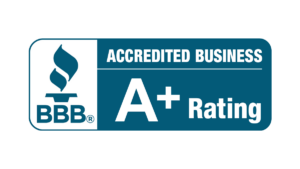Safety Tips To Sell American Art Online: Keep Away From Art Scams
- Posted on 25th November 2023
- in Blog
- by Antique Art Buyers
By following these safety tips, you can help protect yourself from art scams and sell your American art online with confidence. Selling American art online can be a great way to reach a wider audience and find new buyers. However, it’s important to be aware of potential scams that could compromise your safety and lead to financial loss. Here are some safety tips to keep in mind when selling American art online and avoiding art scams:
Use a reputable online platform: Use a reputable online marketplace that has a proven track record of facilitating safe transactions between buyers and sellers. Research the platform’s policies and security measures before you start selling.
Be cautious of unsolicited offers: Be cautious of unsolicited offers from potential buyers who contact you directly via email, phone or social media. Do not share personal information or send artwork until you have verified the buyer’s identity and payment.
Use secure payment methods: Use secure payment methods that offer protection against fraud and chargebacks. Avoid wire transfers, money orders, or personal checks. Consider using a secure payment service like PayPal or Escrow.com.
Get to know the buyer: Establish a relationship with the buyer by asking questions and verifying their identity. Request a copy of their government-issued ID and verify their shipping address and contact information.
Be wary of overpayment scams: Be wary of buyers who offer to pay more than the asking price or who send a cashier’s check for more than the purchase price. These are common overpayment scams where the buyer will ask you to send back the extra amount, but the cashier’s check will later bounce.
Insure and track shipments: Insure and track all shipments to protect yourself against damage or loss. Use a reliable shipping carrier and require a signature upon delivery.
Trust your instincts: If something feels too good to be true or if you feel uneasy about a potential buyer or transaction, trust your instincts and don’t proceed with the sale. It’s better to be safe than sorry.
Back in the day, artists were limited to, information on how, when and where they could sell their art. But, not anymore. If you want to get your art into someone’s hands, you just have to type a few relevant words in the search and be inundated with options.
It’s easier for artists to share their work online with art enthusiasts across the globe now more than ever —and to sell that art and support their businesses, all thanks to the internet.
If you are an artist with any type of internet presence over of the last few years, you’ve most likely received an email from a potential buyer.
You are likely to get excited. But, as you scroll through some of these emails, the information and the manner it reaches you, something seems off. Your excitement of being able to make your new sale is battling with your instincts that this could be a trap.
So, how do you spot an email scam before it’s too late? And what to do when you receive one of these emails?
We are here to give you some of the red flags:
A tight timeline
When the sender claims they need the art quickly or they badger you into a deadline that makes you uncomfortable. They want it shipped before you find out that the purchase is fraudulent. Valid American art buyers, usually are flexible and understand the length of time you set to ship or complete the artwork, as long as you are communicating that they are willing to wait.

Something Doesn’t Add Up
Take some time to do some research, trust your gut and see if the request is real or not. Don’t let your excitement cloud your judgement. If the pieces names are not included with the details or wants to buy a piece that is sold, these are all alarming reasons for a fishy email.
A Request for Cashier’s Check or Bank Information
Never give out personal information such as bank or credit card information as this is a sure-fire way to set yourself up for identity fraud. In such scams, a cashier’s check will almost certainly be fake. Never wire them the money back, if the scammer has taken your artwork and ‘overpaid’ by accident.

There are certain things you could do to have a safe start in the art market.
1. Get connected to American Art appraisers: Keep an expert eye on your collection with an appraiser you can trust. Keep a condition report with regular appraisal of the artwork.
2. Do Your Research: Understand your goals for a strong and intelligent collection.
3. Ask the Right Questions Have the right information of the buyers before starting a conversation. Get connected on a call and ask if you can meet in person or schedule a talk the over phone. Never share your number. A real buyer will have no problem in connecting over the phone.
If you find yourself unsure, take some time before moving forward with any financial matters. Your top priority is to create as an artist. Once you are open to sell artwork, you can genuine American paintings buyers with secure websites for private appointments and safe transaction opportunities. So all that’s left for you to do?
Get out there, use your instinct and gather some information to get connected with the right people!
Tags: american art, art appraisal, art buyers



